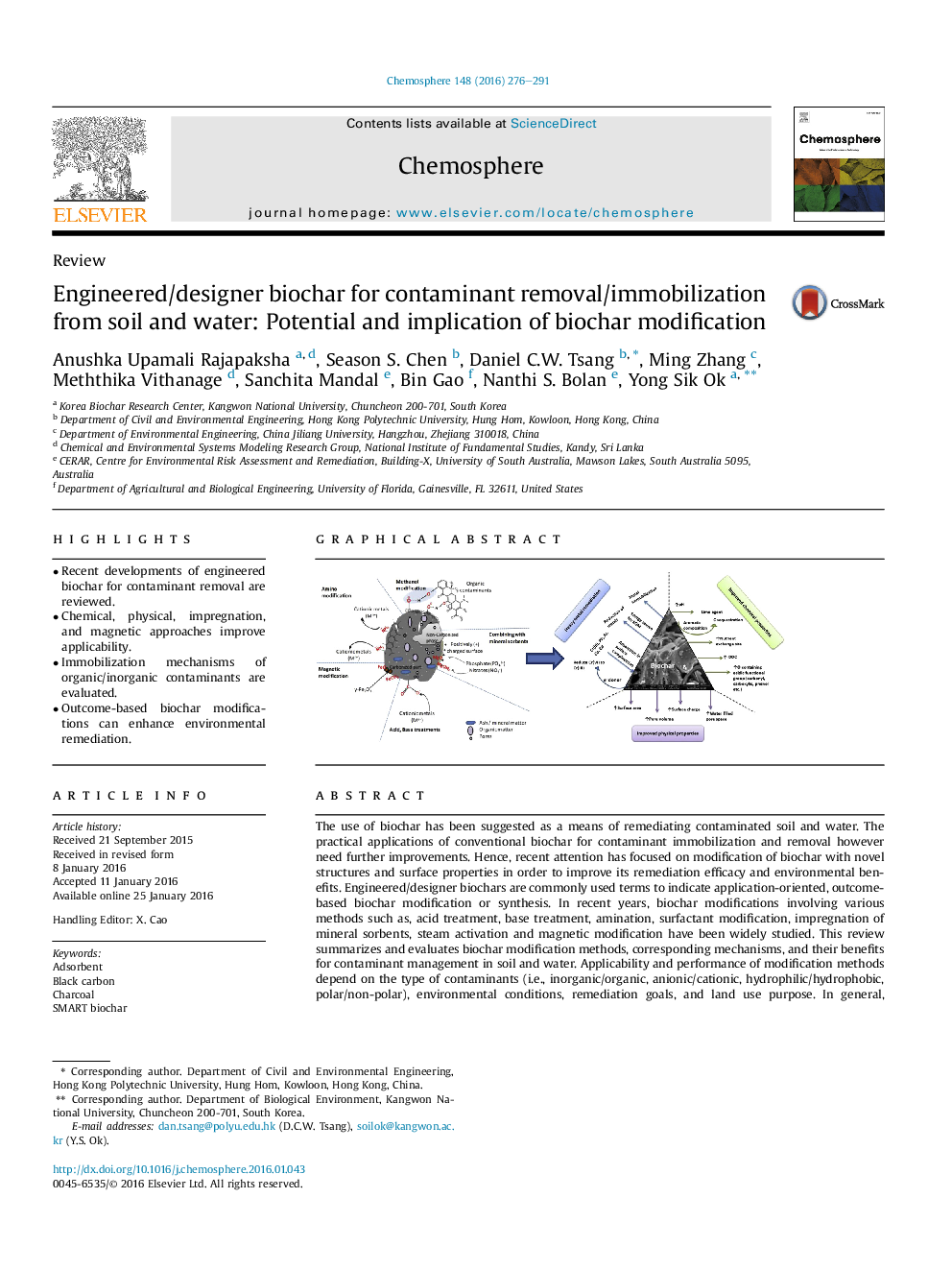| Article ID | Journal | Published Year | Pages | File Type |
|---|---|---|---|---|
| 4407819 | Chemosphere | 2016 | 16 Pages |
•Recent developments of engineered biochar for contaminant removal are reviewed.•Chemical, physical, impregnation, and magnetic approaches improve applicability.•Immobilization mechanisms of organic/inorganic contaminants are evaluated.•Outcome-based biochar modifications can enhance environmental remediation.
The use of biochar has been suggested as a means of remediating contaminated soil and water. The practical applications of conventional biochar for contaminant immobilization and removal however need further improvements. Hence, recent attention has focused on modification of biochar with novel structures and surface properties in order to improve its remediation efficacy and environmental benefits. Engineered/designer biochars are commonly used terms to indicate application-oriented, outcome-based biochar modification or synthesis. In recent years, biochar modifications involving various methods such as, acid treatment, base treatment, amination, surfactant modification, impregnation of mineral sorbents, steam activation and magnetic modification have been widely studied. This review summarizes and evaluates biochar modification methods, corresponding mechanisms, and their benefits for contaminant management in soil and water. Applicability and performance of modification methods depend on the type of contaminants (i.e., inorganic/organic, anionic/cationic, hydrophilic/hydrophobic, polar/non-polar), environmental conditions, remediation goals, and land use purpose. In general, modification to produce engineered/designer biochar is likely to enhance the sorption capacity of biochar and its potential applications for environmental remediation.
Graphical abstractFigure optionsDownload full-size imageDownload as PowerPoint slide
